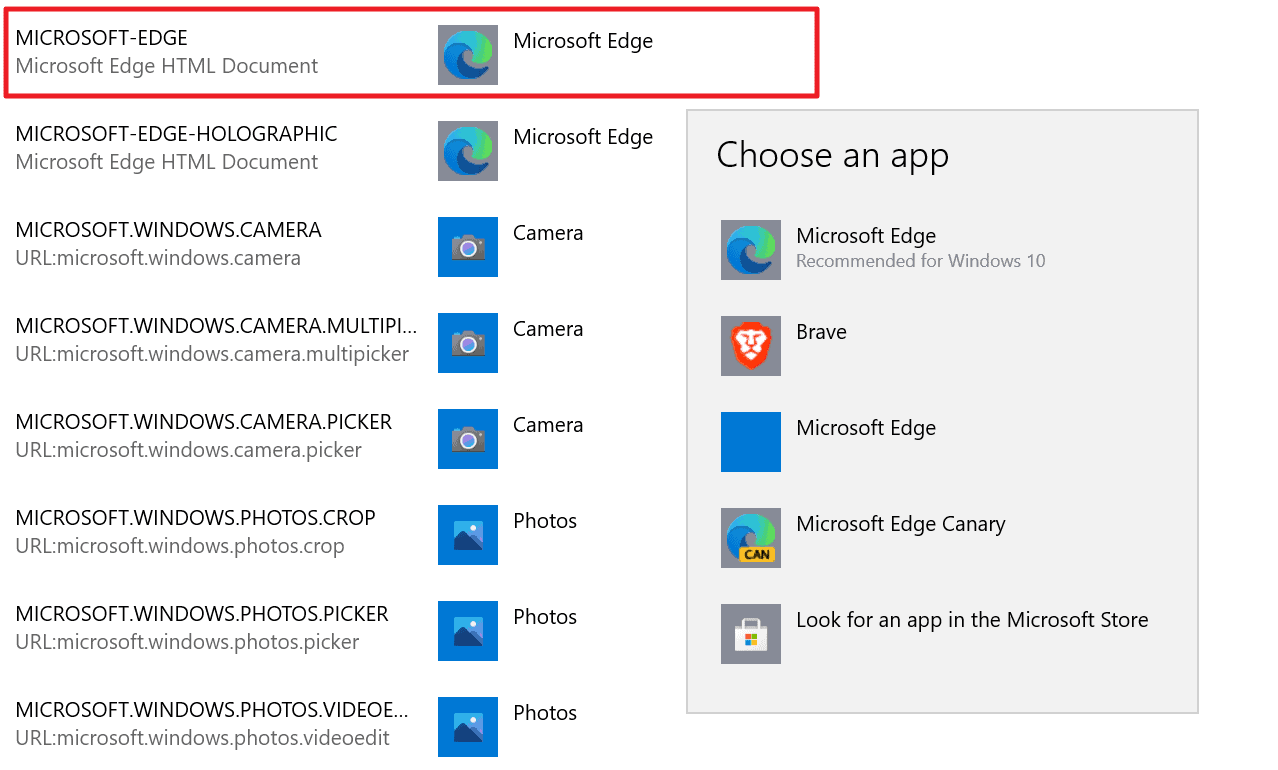Brave 1.30 introduces a new option for devices running Windows 10 or Windows 11, which allows the browser to become the default browser for Microsoft Edge's internal protocol. Searches and internal pages that Microsoft designed using the protocol, microsoft-edge://, will open in Brave if configured correctly.
Windows 10 and Windows 11 users who make a third-party web browser the default system browser, meaning any browser that is not Microsoft Edge, may notice that some requests are still loaded in Edge. Web search results of the Start menu are a prime example; others include help file and support links, or when uninstalled programs spawn a web page.
Third-party programs like Edge Deflector or BrokenURL were developed to bypass the limitation. These programs register as the default protocol handler for the Microsoft Edge protocol and redirect requests to another browser. Browsers have not used the method up until now to hijack the Edge protocol requests so that they are opened in the browser and not in Edge.
Brave 1.30 changes that. The developers analyzed the Microsoft-Edge protocol and how it is set, and implemented an option in the new version of Brave that gives users the option to make Brave the true default browser on the Windows device.
The feature is not automated, but setup is quick. All you have to do after upgrading to Brave 1.30 -- check brave://settings/help to see the version -- is to launch a request that uses the protocol. A simple option is to click on a web search result in the Start menu. A "choose your browser" prompt is displayed and Brave is one of the options. Check "always use this app" and pick Brave browser from the short list of options.
Configuration in Settings

Alternatively, you may set Brave in the Settings as well. Use Windows-I to open the Settings application, or go to Start > Settings.
On Windows 10:
- Navigate to Apps > Default Apps > Choose default apps by protocol.
- Locate "Microsoft-Edge" on the page that opens in the Name column.
- Left-click on Microsoft Edge in the second column and pick Brave from the "choose an app" list to make it the default for the protocol.
On Windows 11:
- Navigate to Apps > Default Apps > Choose defaults by link type.
- Locate "Microsoft-Edge" on the page that opens in the Name column.
- Left-click on Microsoft Edge in the second column and pick Brave from the "choose an app" list to make it the default for the protocol.
The change takes effect immediately. Run another web search from Start, and you will notice that results open in Brave and no longer in Microsoft Edge. Note that Bing is still used when searches are made and that it includes several parameters. Brave has a thread open on GitHub, and it may address this in a later build of the browser as well.
Brave 1.30 introduces a handful of other features. Users of the browser may enable the new "Index other search engines" option to automatically add search engines that support the OpenSearch spec to Brave. Linux and Mac admins may disable Tor via a new policy, and Brave's content blocker allows first-party requests in the standard (default) setting now. You can check out all
Closing Words
It is probably only a matter of time before other third-party browsers implement similar functionality. There is no good reason, other than pushing Microsoft Edge, to limit a browser protocol on Windows.
Thank you for being a Ghacks reader. The post Brave 1.30 supports Microsoft Edge's protocol on Windows to become the true default browser on Windows 10 and 11 appeared first on gHacks Technology News.


0 Commentaires